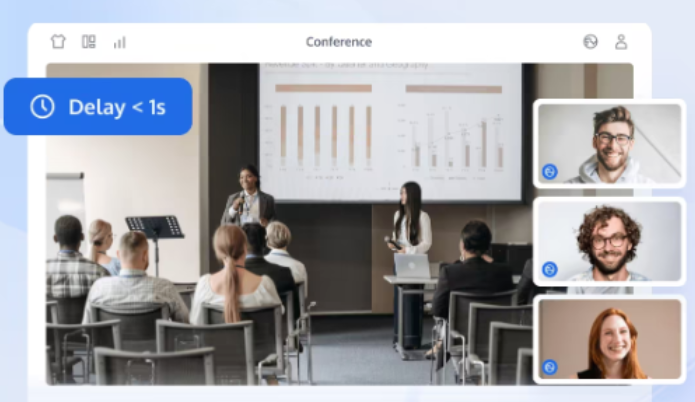Web Conferencing: Revolutionizing Communication In A Digital Age

The way we work and connect has undergone a dramatic transformation in the digital age. Gone are the days when in-person meetings were the only option for collaboration. Web conferencing has emerged as a powerful tool, enabling real-time, virtual meetings and fostering communication across geographical boundaries. This article delves into the world of web conferencing, exploring its benefits, functionalities, and impact on various aspects of professional and personal life.
What is Web Conferencing and its functionalities?
Web conferencing is an umbrella term encompassing various online meeting and collaboration functionalities. It utilizes internet technologies to facilitate real-time interaction between individuals or groups at geographically dispersed locations.
The platforms offer a suite of features that go beyond simple audio communication. Features like video conferencing, screen sharing, instant messaging, and file sharing allow for a more engaging and productive collaborative experience. You can even make your own platform with Tencent RTC. Here’s a breakdown of some key functionalities of web conferencing:
- Video Conferencing: This allows participants to see and interact with each other in real time, fostering a more personal connection than audio-only communication.
- Screen Sharing: Presenters can share their computer screen with participants, enabling them to showcase presentations, documents, or applications seamlessly.
- Instant Messaging: Real-time chat functionality allows for quick communication and clarification during meetings.
- File Sharing: Participants can share documents, presentations, or other files directly within the web conferencing platform.
- Recording and Transcription: Many platforms offer recording capabilities, allowing users to revisit meetings or share recordings with those who couldn’t attend. Some platforms even offer transcription services to convert recordings into text.
Applications of Web Conferencing
Web conferencing has a wide range of applications across various sectors. Here are some prominent examples:
- Business Meetings: Web conferencing is a popular tool for conducting business meetings, project discussions, client presentations, and training sessions.
- Training: Online courses, webinars, and virtual classrooms are facilitated through web conferencing platforms, providing flexible learning opportunities.
- Medical: Telemedicine consultations, patient education sessions, and collaboration among healthcare professionals are made possible through secure web conferencing tools.
- Online Work: Web conferencing is crucial for facilitating communication and collaboration among remote teams, fostering a sense of connection and productivity.

The Future of Web Conferencing
As technology advances, web conferencing platforms are constantly evolving. Here are some trends that are shaping the future of web conferencing:
- Artificial Intelligence (AI): AI can be integrated to enhance features like real-time translation, automatic transcription, and intelligent meeting summaries.
- Virtual Reality (VR) and Augmented Reality (AR): VR and AR can create even more immersive and interactive meeting experiences.
- Enhanced Security and Privacy: Security and data privacy will remain a top priority, with platforms implementing advanced encryption and access control measures.
- Integration with Productivity Tools: Web conferencing platforms will integrate seamlessly with popular productivity tools, streamlining workflows and enhancing collaboration.
Conclusion
Web conferencing has revolutionized the way we communicate and collaborate in today’s digital world. It offers numerous benefits for businesses, educational institutions, and individuals alike, fostering efficient communication, increased productivity, and global collaboration. As technology continues to develop, we can expect web conferencing platforms to become even more sophisticated and user-friendly, shaping the future of virtual interaction.






